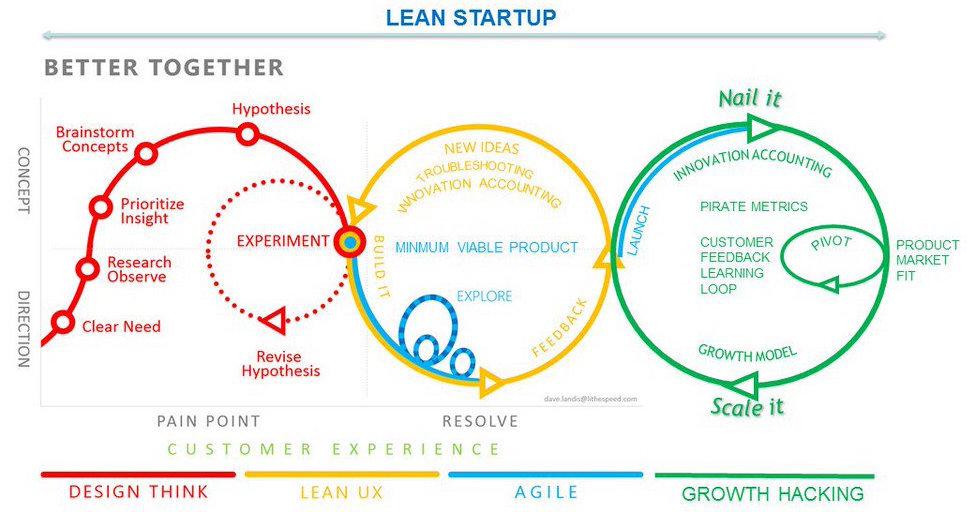Innovation Confusion !

What frameworks and toolkits to use for innovation is often a big debate. It becomes confusing and overwhelming when people throw at you words like design thinking, lean start-up, lean UX, agile, growth hacking, agile marketing or dev ops!
The reality though is that these toolkits and frameworks, although overlapping really complement each other! The important thing to understand is that innovation is an iterative process, that needs constant validation at all stages of the process.
Design thinking for instance, is useful at uncovering needs, customer pain points and developing initial concepts and prototypes, even on paper.
When analyzing customer journeys and designing user experiences, you start overlapping with approaches like lean UX. As you design these journeys, you will need to quickly validate them, and that is why you also need short development cycles. This is where agile comes in.
Agile uses short development prints that quickly produce testable functionality. For validation you also need a similar marketing approach, with small quantitative experiments.
When scaling you still have to provide frequent updates and perform marketing experiments. This is when DevOps and growth hacking come in.
The thing that is difficult to get used to is that many of these circles are very close to each other. It is very iterative and with an intent to grow fast or fail fast. I think the part that is often missing is that you need to be as agile in marketing as you are in development.
The other part that is often missing in these diagrams is the need to implement a DevOps like approach and growth approach for continuing to provide fast improvements and continue growth once you have achieved market fit.
What validation processes (stress tests) and confirmation progresses (decision points) will be key. Experimentations are necessary, though when and where the cut-off/cut loss points are, will depend on how risk aversed one is.
I think it is not only depending on how risk averse you are, but it is also based on other aspects like ego, but above all experience.
I think one way to tacle the organizational structure is first to start by braking silos. I wrote yesterday about how companies like Amazon are good at doing this. They build empowered cross-functional teams that can quickly adopt some of these methodologies to produce results. Of, course it can be difficult to do this while developing the right skillsets, so one approach is to inject new talent, the other one is to have innovation consultants guide you and coach you theough that process. One you create first success stories you can scale the approach.
if you look at the Gartner CIO survey from 2016, you'll also find that Crowdsourcing is considered the most effective
The survey shows indeed that crowdsourcing has highest performance, but all approaches are pretty much clustered in the same area. Which tells me that you need to play on more than one field. Then when it comes to crowdsourcing, I think it is indeed a good approach in the ideation phase, but then you still need to be able to take these ideas to the next step.
